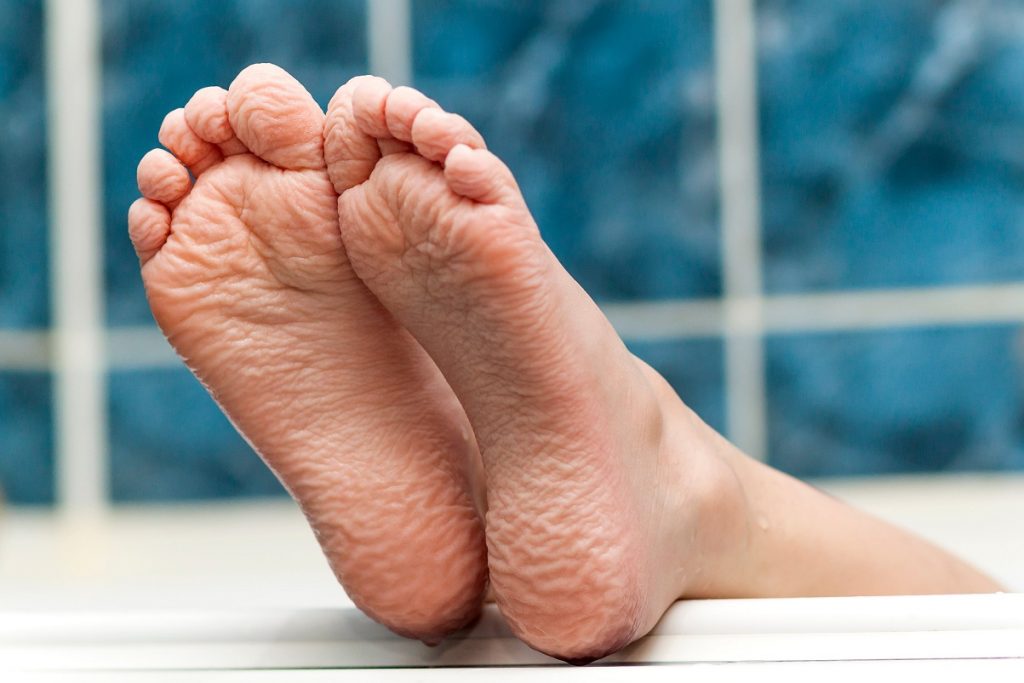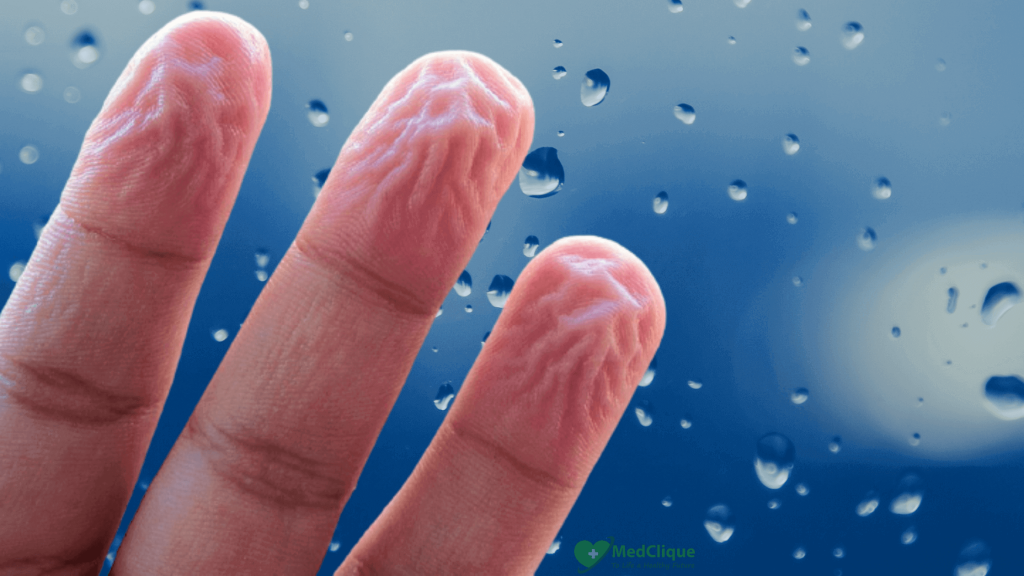Did you ever wonder why the skin on our fingers and toes turn wrinkly when we soak in the water for some time? This is normal – but why does it happen?
Staying in a pool or a bathtub for long makes our fingers wrinkly. There’s still a lot to learn about the hows and whys of water wrinkling.
Moving ahead, we need to better understand the anatomy of our skin and its layers first.
The skin layers
The skin is the largest organ in human body. It has three layers;
- The subcutaneous layer is the inner and deepest layer made of fats and connective tissues.
- Dermis layer or the middle layer is consisting of blood vessels, nerves, hair roots, and sweat glands.
- The epidermis layer or the outermost layer helps in the protection of internal layers from harm and avoids evaporation of water from the body. This outer layer is made up of keratin, a protein.
This region of skin consists of four layers such as stratum corneum, granular layer, squamous cell layer, and basal cell layer.
The stratum corneum is the outer part that one can see and feel, and is made of dead keratin cells. These cells are responsible for the formation of wrinkles in the fingers and toes.
These keratin cells undergo a natural programmed death, and thus, newly formed cells (nucleus) stay at the bottom while the older cells (involutes) are pushed upward continuously to form a dead keratin cell layer.
Related Read l Home remedies for the UV damage to skin
Why do wrinkly fingers happen?
The wrinkling effect mostly pops-up on the thickest layer of the skin. This layer is found on the inner surface of the hands and feet.
Role of keratin
When hands are soaked in water, the keratin absorbs it and swells. The inside of the fingers, however, does not swell. As a result, there is relatively too much stratum corneum, and it wrinkles.
This bunching up occurs on fingers and toes because the epidermis is much thicker on the hands and feet than elsewhere on the body. It is called as aquatic wrinkles.
Osmosis process
You must know that water molecules naturally flow through a semipermeable membrane from a low concentration area to a high concentration area through a process called osmosis.
When we stay in water for a longer time, osmosis occurs and the water flows into the upper skin cells, which then take up the water. Both, shrinking and expanding effects take place simultaneously in these skin cells, causing wrinkly fingers.
Role of sebum
Your skin is covered with oily Sebum which is found in the outermost layer of skin. Sebum is moistened and protects your skin by making it a bit waterproof. That’s why water runs off your skin when you wash your hands.
Soaking fingers in water for a long time wash out the sebum on your skin. Thus, the water can penetrate the outer layer of your skin and making your skin waterlogged.
The role of the Nervous system
Researchers believe that this process is controlled by the autonomic nervous system. The distinctive wrinkling is caused by blood vessels constricting below the skin – a process called vasoconstriction.
It is an involuntary reaction by the body’s autonomic nervous system — the system that also controls breathing, heart rate, and perspiration.
When your nervous system functions properly, soaking in water sends a message through the nerves telling those blood vessels to shrink.
When the hand is soaked in water, the nerve fiber in the skin shrinks, and the body temperature regulator (glomus bodies in the skin) in the hand loses its volume. Thus the epidermis of the skin is pulled downward, forming wrinkles.
Related Read l Know more about your Nervous system, organs, and function
When will it not happen?
As said above, wrinkling is a part of an involuntary (automatic) response of the nervous system.
Researchers have noticed that the wrinkly fingers do not happen when there is nerve damage or a sympathetic nerve cut.
Even if you soak them for the whole day, the fingers will not get wrinkled. This is due to the nerve function loss that happens due to the cut or damage.
People with other disorders or those with replanted amputated fingers that have resulted in nerve function loss will also show no wrinkling after soaking the fingers in the water.
Why not in other Parts?
The wrinkly fingers or toes are the usual things for many of us; however, it does not happen to other parts of our body. There are several reasons like;
- The epidermis part of our finger skin contains more keratin cells than other parts.
- Similarly, keratin cells are present in hairs and nails in most amounts. They also absorb the water, yet they cannot wrinkle in volume. Instead, they get softer.
Advantage of wrinkly fingers
Initially, it was thought that due to wrinkly skin, the sensitivity of the fingertip is reduced and damage to the skin is increased.
In a recent study conducted on a sample population in three different contexts – normal, dry, and wrinkly hands (formed from soaking in warm water for 30 min), the participants were asked to pick up wet or marbles of different sizes. The results were published today in Biology Letters.
The participants were faster at picking up wet marbles with wrinkled fingers than with dry ones. The study concluded that wrinkled fingers provide a better grip for holding objects.
A similar effect in the toes gives us a better grip while walking in the rain or when you have to move fast on wet ground, wrinkly toes might have better gripping qualities too.

Studies also state that wrinkled fingers might have served as an added advantage for our human ancestors to collect wet vegetables and food from streams or a barefooted ancestor fleeing a predator in the rain.
Similar wrinkling occurs in other animals for which it would provide the same advantages.
Related read l 8 most effective home remedies for Toenail fungus
What to do when we get wrinkly fingers?
You have to do nothing – this is a temporary phenomenon. It goes away quickly on its own when the water in the fingers or toes has completely evaporated. It leaves your skin dryer than before.
The oils that hold the water in have usually been stripped out by the bath especially if soap and hot water are involved. But if the oil is added before the skin dries, much of the absorbed water is retained.
Thus, applying a bath oil or heavy lotion directly after a bath or shower is a good method of hydrating the skin.
You must read l Why does cardiac arrest or stroke often occurs in bathroom?
